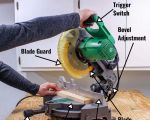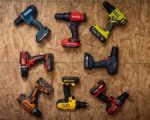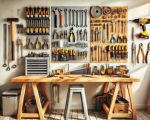How to Use a Wood Lathe for Beginners
- Understanding the Basics of Wood Turning
- Choosing the Right Wood Lathe
- Essential Wood Turning Tools for Beginners
- Step-by-Step Guide for Beginners
- Safety Tips for Using a Wood Lathe
- How to Improve Your Wood Turning Skills
- Explore More Tools at ToolNest
Understanding the Basics of Wood Turning
Wood turning is a craft that involves shaping wood on a lathe by removing material with tools. The lathe rotates the wood while the turning tools shape it, allowing the crafter to create various shapes, including bowls, spindles, and other decorative items. For beginners, mastering the basics of wood turning is key to creating beautiful, functional pieces with precision and skill.
When learning how to use a wood lathe, it's important to understand the process of turning. You will use different turning tools, each with a specific purpose, and your success depends on your ability to control both the lathe and the tools. Let’s dive into how you can get started with wood turning and the equipment you’ll need.
Choosing the Right Wood Lathe
For a beginner, selecting the right wood lathe is crucial to having a smooth and safe wood-turning experience. There are several factors to consider when choosing a lathe:
- Size and Capacity: Wood lathes come in various sizes, from small benchtop models to large floor-standing units. For beginners, a benchtop lathe is often a good choice due to its compact size and affordability.
- Variable Speed Control: A lathe with adjustable speed control allows you to work on different projects with ease. Slower speeds are ideal for delicate work, while higher speeds are better for larger pieces.
- Stability: A stable lathe is important for smooth operation. Look for a model that has a sturdy frame to minimize vibrations while turning.
- Motor Power: The power of the motor determines how efficiently the lathe can handle different types of wood. A motor with at least 1/2 horsepower is suitable for most beginner projects.
Essential Wood Turning Tools for Beginners
Once you’ve chosen your lathe, it’s time to gather the tools that will help you shape your wood. Here are the essential tools for beginners:
- Spindle Gouge: This is a versatile tool used for shaping and refining cylindrical shapes, such as spindles and handles.
- Bowl Gouge: Designed for shaping the inside of bowls or other rounded objects, the bowl gouge is a must-have for more advanced turning.
- Parting Tool: Used for making narrow cuts, parting tools help separate parts of the wood and define fine details.
- Scraper: A scraper is used for smoothing and finishing the surface of a turned piece, especially when making bowls or flat surfaces.
- Calipers: Calipers are essential for measuring the thickness of your wood, ensuring uniformity in your project.
Step-by-Step Guide for Beginners
Now that you have your lathe and tools, here’s a simple step-by-step guide to get you started on your wood turning journey:
- Prepare Your Workspace: Set up your lathe in a well-lit and clean space. Ensure that you have enough room to move around comfortably and that all your tools are within reach.
- Secure the Wood: Place the wood securely on the lathe, ensuring that it is balanced and centered. Use the tailstock and headstock to hold the wood in place.
- Turn the Lathe On: Start the lathe at a low speed to ensure it’s functioning properly. Once it’s stable, you can increase the speed for finer shaping.
- Begin Shaping: Use the spindle gouge or bowl gouge to start shaping your wood. Always keep your hands steady and apply light pressure to avoid accidents.
- Finish and Sand: Once your piece is shaped to your liking, use the scraper tool to smooth out any rough spots. Afterward, sand the surface to achieve a smooth finish.
Safety Tips for Using a Wood Lathe
Safety is paramount when using a wood lathe. Here are some tips to ensure that your wood-turning experience is both enjoyable and safe:
- Wear Protective Gear: Always wear safety glasses to protect your eyes from flying debris, and use ear protection to minimize the noise from the lathe.
- Check Your Tools Regularly: Inspect your turning tools before each use to ensure they are sharp and in good condition. Dull tools can lead to accidents and poor results.
- Secure the Workpiece Properly: Ensure that the wood is securely fastened before turning on the lathe. Loose workpieces can cause the wood to fly off, which can be dangerous.
- Maintain a Safe Distance: Always keep your hands and other body parts away from the rotating piece of wood to avoid injury.
How to Improve Your Wood Turning Skills
Like any skill, wood turning improves with practice. Here are some ways to improve your skills:
- Practice Consistently: Regular practice will help you become more comfortable with your lathe and tools. Start with simple projects, and gradually work your way up to more complex pieces.
- Learn from Others: Attend workshops, watch tutorial videos, and join wood-turning communities to learn tips and techniques from experienced turners.
- Experiment with Different Woods: Try working with different types of wood to understand how each one behaves. Softer woods are easier to turn, while hardwoods offer a more challenging experience.
Explore More Tools at ToolNest
If you're looking for high-quality tools and equipment to enhance your wood turning projects, visit ToolNest for a wide range of products. From beginner lathes to advanced accessories, ToolNest has everything you need to take your craft to the next level.
Browse our selection and discover the best tools for your woodworking journey!









